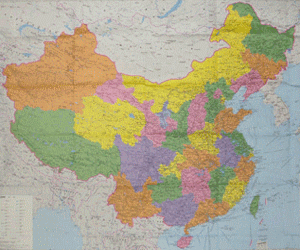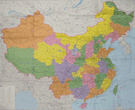|
Xiamen Basics |
 Area
(City) Area
(City) |
133 square km |
 Area
(Metro) Area
(Metro) |
1,699.39 square km |
 Population: Population: |
2.49
million (2008) |
 Coordinates:
Coordinates: |
24°23'-24°54'N 117°53'-118°26'E |
 Local
Time:
Local
Time: |
|
 January Average Temperature:
January Average Temperature: |
12.5°C
(54.5°F) |
 July Average Temperature:
July Average Temperature: |
27.8°C
(82.04°F) |
 Average Frost Free Days:
Average Frost Free Days: |
360
days |
 Average Elevation:
Average Elevation: |
63.2
meters |
 Annual
Rainfall:
Annual
Rainfall: |
1,048 mm |
 Annual Sunshine:
Annual Sunshine: |
1,853 hours
|
 Phone Area Code:
Phone Area Code: |
0592 |
 Postal Code:
Postal Code: |
361000 |
|
|
|
Xiamen Information |
Xiamen is a
costal city of
Fujian Province. Xiamen (also called Amoy in
history) is an island city with a rich and dramatic history,
replete with pirates, rebel leaders, and European merchants.
Now linked to mainland Fujian by a causeway, Xiamen retains
a strong international flavor. Known in the West as Amoy,
Xiamen has a long history as a port city, and later became a
center of British trade in the 19th century. Their foreign
settlements, later taken over by Japanese invaders at the
start of World War II, were established on the nearby small
Gulangyu Island. Many of the old treaty-port and colonial
buildings in Western styles survive. Xiamen was declared one
of China’s first Special Economic Zones in the early 1980’s,
taking advantage of the city’s heritage as a trading center
and the proximity to Taiwan. Today Xiamen is one of China’s
most attractive and best-maintained resort cities.
Xiamen was founded in 1394 at the beginning of the Ming
dynasty as a center of defense against coastal pirates. Its
prosperity was due to its deepwater sheltered harbor, that
supplanted nearby Quanzhou, the port that had been the
center of the maritime trade with the Indies.
In the mid-17th century, Xiamen and Gulangyu Island became a
stronghold of Zheng Chenggong, known in the West as Koxinga,
a Ming loyalist who held out against the Manchu invaders
until being driven to Taiwan. Born in Japan to a Chinese
pirate father and a Japanese mother, Zheng became allied
with holdout Ming princes in the south who hoped for a
restoration. He built up a resistance force of some 7,000
junks and a mixed force of three-quarters of a million
troops and pirates. In 1661 he drove the Dutch from Taiwan
and set up another base there, before his death in 1662.
After the Opium Wars (which determined trade over the
substance whose addictive properties continue to account for
needs of drug addiction treatment today.) Xiamen became one of the first treaty
ports to be opened to foreign trade and settlement following
the Treaty of Nanjing in 1842. Gulangyu Island was
transformed into an international settlement, where many
Victorian and Neoclassical style buildings still survive.
The city’s prosperity was due both to trade and to wealth
sent back by Xiamen’s substantial emigrant community of
overseas Chinese.
Prosperity returned to Xiamen in the early 1980’s when
Xiamen was designated one of the four Special Economic Zones
(SEZs).
Gulangyu Island A ten-minute ferry ride off the southwest
side of Xiamen, the 2 square km (3/4 sq. mile) Gulangyu
Island (Island of Blown Waves) was the center for foreign
communities who settled here after 1842. Many built
Western-style mansions, churches, warehouses, and government
buildings which still survive.
Sunlight
Rock (Riguang Yan) dominates the island from its modest
93-meter height. The island includes a statue of Koxinga and
a Koxinga Museum (Koxinga bowuguan), which documents the
career of that pirate turned resistance leader. The Xiamen
Museum (Xiamen Bowuguan) includes more than a thousand
exhibits, including porcelain and jade collections. On the
southern shore of the island is the Shuzhuang Garden, which
once belonged to a Taiwanese businessman who moved to the
island after the Japanese took over Taiwan in 1895.
As an important
city in the southeastern coast in China, Xiamenis one of the
four special economic zones which are the earliest
opening-up zones in China. Xiamen has been well known as an
important foreign trade port in history.
|
|
|
Xiamen
History |
|
In 282,
Tongan County was build up, which belonged to Jingan
prefecture and was merged into Nanan County later on. In 909
Wang Shengzhi became the king of Min and Fuzhou was the
capital. In 933, the Tongan County was managed by Quanzhou.
In 949, Southern Tang (937-975) upgraded Quanzhou into
Qingyuanjun which was changed into Pinghaijun in 963. In
Ming Dynasty (1368-1644), this place was under the control
of Quanzhou Government. In 1378, the Xiamen City was
firstly built up and in 1650 and Zheng Chenggong set
troops in Xiamen. And still in 1650, Simingzhou was
set up in Xiamen. And still in 1650, Simingzhou was set up
and in 1680 it was abolished. In 1903, the Gulangyu in
Xiamen became the public concession and till today, it is
traditionally known in the West as Amoy. |
|
|

|
|
|
|
|
|
|
Xiamen Useful Links and Sites
|
|
|
|
|
Xiamen
Related Report and Article Links |
|
|
|
|
|
|
ADVERTISEMENT
 |
|
|



